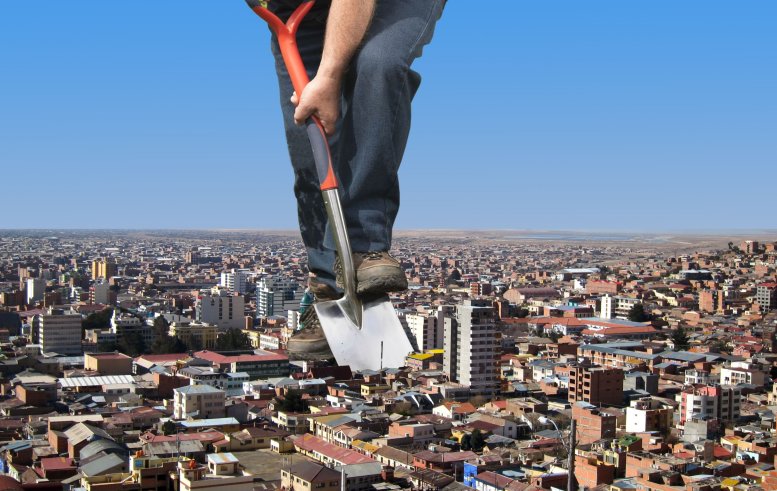My brother, Daniel, made this image in Photoshop (no, it’s not real) in response to the soil course (‘humism’) I taught from 2013 to 2018. Since then, I have used it in almost all of my lectures and courses. It powerfully expresses what the course is all about: the soil is almost literally a city.

Organisms can take years to find their place. They enter into all kinds of relationships with city residents and they build the infrastructure together. Worms, moles, ants and other excavators make corridors similar to roads: roots like to grow through them. Organic material from the surface, water and air, are transported downwards through these corridors.
Mycorrhizal fungi serve as water pipes as they collect water across large areas and deliver it to plants and trees. They also transport nutrients between places — moving them from one place with a surplus to another with a shortage. This process runs quite slowly, more like foot traffic than a highway with trucks. However, this does not make it any less essential.
The fungi also form a kind of internet: where plants and trees communicate with each other. For example, they can warn each other about the attack of bacteria, fungi or insects. The result is plants and trees can produce antibodies in time, and they can also attract predators by secreting certain fragrances.
Fungi go one step even further: they form a power grid. Plants capture the sun’s energy in carbon compounds and send it into the soil. The fungi send this energy back and forth between plants. A conifer in the shade of a deciduous tree can receive carbon from the deciduous tree in the spring and summer, and the deciduous tree can receive carbon from the conifer in the fall and winter when it has no leaves. In this way, the fungi help both trees to grow.
Of course, there are also differences (city dwellers, for example, do not eat each other). But the picture is clear: if you dig up the soil, you destroy the infrastructure organisms have built and the relationships they have established with each other. If this happens every year, the opportunists (the ones you see first in a city in turmoil) will take over, and the soil can never fulfil its health-making functions. A wise lesson in one picture!
Original title: De bodem als stad, translation by Aveen Colgan
